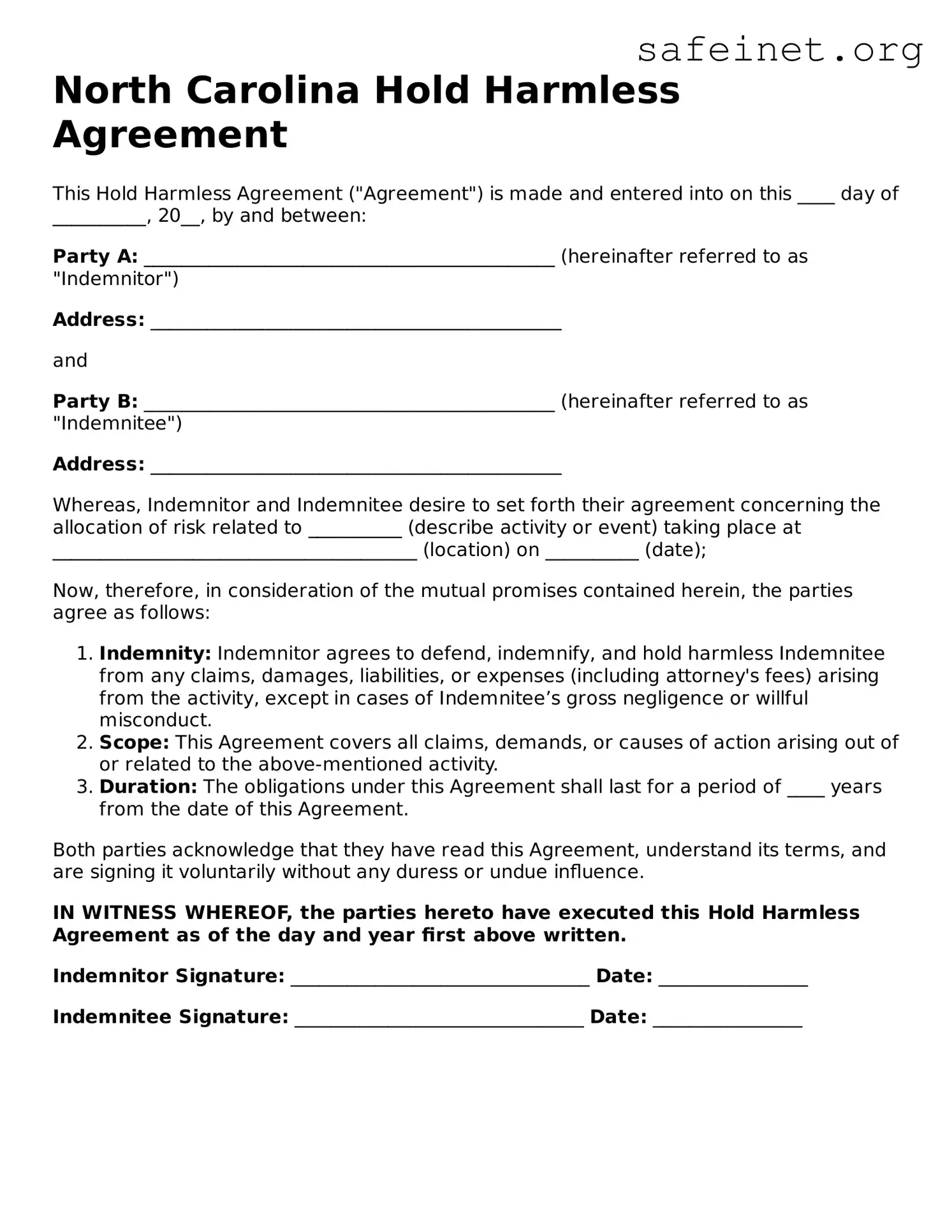What is a Hold Harmless Agreement?
A Hold Harmless Agreement is a legal document that protects one party from liability for damages or injuries that may occur during a specific activity or event. By signing this form, you agree that you will not hold the other party responsible for certain risks, ensuring that each party understands their responsibilities and liabilities.
Who needs to use a Hold Harmless Agreement in North Carolina?
Individuals and organizations involved in activities that may pose risks, such as events, sports, or construction projects, may benefit from using a Hold Harmless Agreement. This form is often used by businesses, event organizers, and property owners to minimize their risk exposure.
Is a Hold Harmless Agreement legally binding in North Carolina?
Yes, a properly executed Hold Harmless Agreement is considered legally binding in North Carolina. However, its enforceability may depend on the specific language used and the circumstances surrounding the agreement. It's advisable to consult with a legal expert to ensure compliance with state laws.
What should be included in a Hold Harmless Agreement?
A comprehensive Hold Harmless Agreement should include the names of the parties involved, a clear description of the activity or event, a statement of the assumption of risk, and sections that outline the extent of liability protection provided. Additionally, it should contain signatures from all parties to indicate agreement.
Can a Hold Harmless Agreement cover negligence?
In many cases, Hold Harmless Agreements can limit liability for negligence. However, they cannot absolve a party from liability for gross negligence or intentional misconduct. Ensure the agreement clearly defines the extent of liability coverage, and consider seeking legal advice for more complicated scenarios.
Do I need a witness or notarization for a Hold Harmless Agreement in North Carolina?
While neither a witness nor notarization is generally required for a Hold Harmless Agreement in North Carolina, having a witness can provide an added layer of validity. Notarization may be beneficial in certain circumstances, especially if the agreement will be presented in a legal setting.
Can a Hold Harmless Agreement be revoked?
Yes, Hold Harmless Agreements can typically be revoked or modified, but the process must be clearly defined within the document. Both parties should mutually agree to any changes or revocation, preferably in writing, to ensure that any new terms are legally recognized.
How long does a Hold Harmless Agreement last?
The duration of a Hold Harmless Agreement can vary based on the specific terms outlined in the document. Some agreements are event-specific, while others may last for a longer period. Be sure to understand the specifics regarding the duration when drafting or signing the agreement.
What happens if someone is injured despite a Hold Harmless Agreement?
If an injury occurs despite the existence of a Hold Harmless Agreement, the injured party may still have the right to seek compensation, especially if negligence or gross misconduct is proven. The agreement's effectiveness can depend on its terms and how they align with state laws.
Where can I find a Hold Harmless Agreement template in North Carolina?
Templates for Hold Harmless Agreements can often be found online through legal document providers, local government websites, or legal service organizations. It's essential to tailor any template to fit the specific situation accurately and to seek legal counsel if necessary for the best results.
